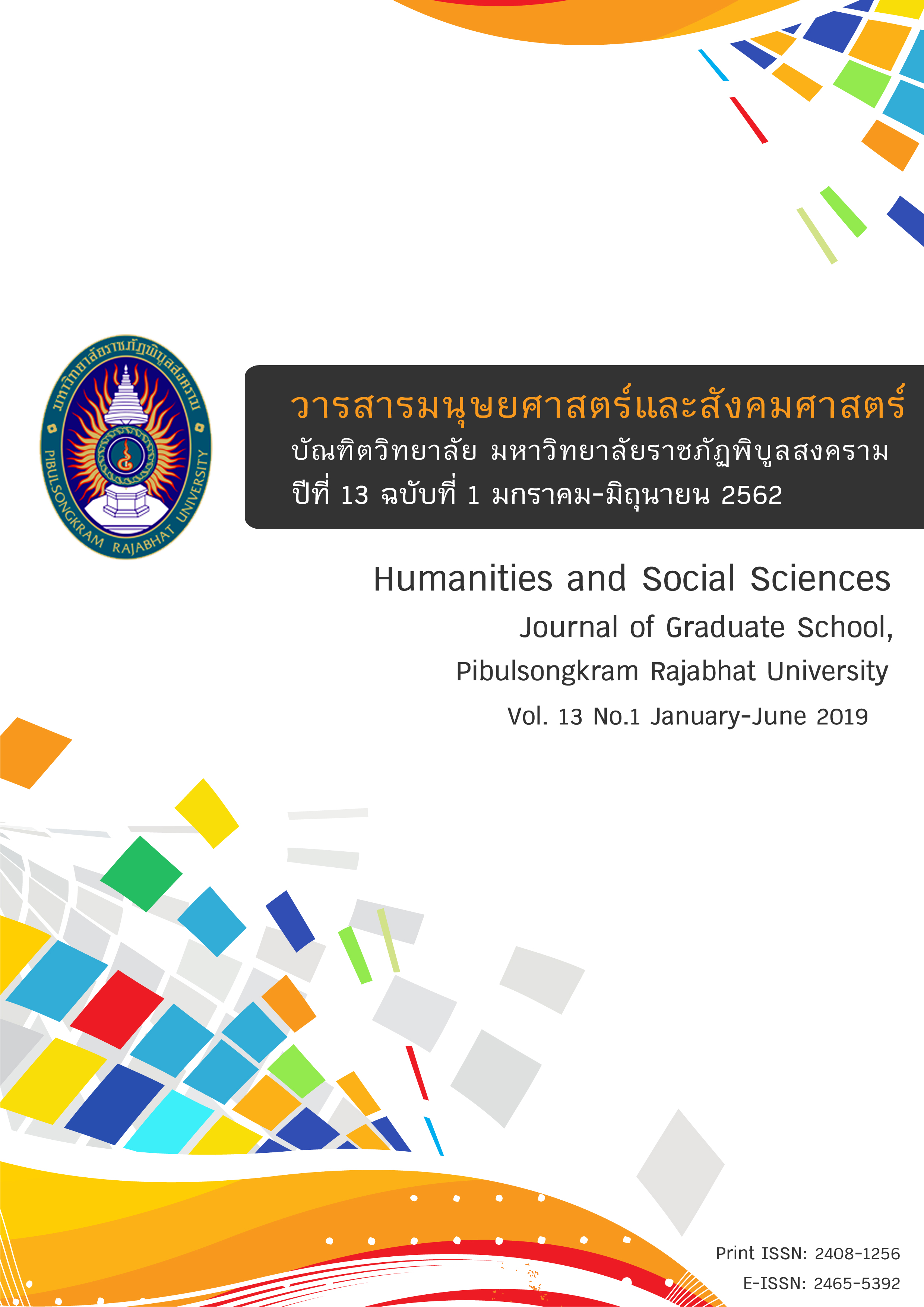Model-Based Learning with Augmented Reality for Enhancing Mental Models in Covalent Bond Topic
Keywords:
Model Based-Learning with Augmented Reality Technology, Mental Models, Covalent bondAbstract
This action research aimed to study how to use model-based learning with augmented reality technology strategies to promote students’ mental models and its effect on students’ mental models in covalent bond topic. The participants were 49 tenth grade students from a school in lower northern part of Thailand. The research instruments included learning management observation form, mental model questionnaire, students’ artifacts and interview about instants. The data were analyzed by content analysis in order to categorize students' mental models and find the percentage of each the mental model level.
The results indicated that four steps of model-based learning with Augmented Reality technology strategies for developing students’ mental models in covalent bond topic should be as follows. Creation of the model, teacher reviews the content before learning and should present everyday situations related to the covalent bond. Expression of the model, teacher uses questions to motivate students to express their mental model and use various models that are suitable for the covalent bonding. Test of the model, teacher introduces how to use augmented reality and then asks questions to motivate students to find the relationship between information and their models in order to revise their models. Evaluation of the model, students practice to evaluate their models. Furthermore, the results developing students’ mental models indicated that the majority of students held correct mental models in 3 topics (54.35%) which covalent network crystals topic was most developed mental models according to the scientific model.
References
ณัฏฐ์ ดิษเจริญ, กรวัฒน์ พลเยี่ยม, พนิดา วังคะฮาต, และปุริม จารุจำรัส. (2557). การพัฒนาสื่อการเรียนรู้ เรื่อง โครงสร้างอะตอมและพันธะเคมี ด้วยเทคโนโลยีออกเมนเต็ดเรียลลิตี้. วารสารหน่วยวิจัยวิทยาศาสตร์และเทคโนโลยีและสิ่งแวดล้อมเพื่อการเรียนรู้, 5(1), 21–27.
ภรทิพย์ สุภัทรชัยวงศ์. (2556). การจัดกิจกรรมการเรียนรู้โดยใช้แบบจำลองเป็นฐานเพื่อพัฒนาแบบจำลองทางความคิด เรื่อง โครงสร้างอะตอมและความเข้าใจธรรมชาติแบบจำลองของนักเรียนชั้นมัธยมศึกษาปีที่ 4 (วิทยานิพนธ์ปริญญามหาบัณฑิต). มหาวิทยาลัยเกษตรศาสตร์, กรุงเทพฯ.
สมฤทัย สังฆคราม. (2533). รูปแบบการทำความเข้าใจของนักเรียนชั้นมัธยมศึกษาปีที่ 4 เรื่องพันธะเคมี โดยใช้วิธีการสอนแบบเปรียบเทียบตามแนว FAR (วิทยานิพนธ์ปริญญามหาบัณฑิต). มหาวิทยาลัยขอนแก่น, ขอนแก่น.
สิรินภา กิจเกื้อกูล. (2557). การจัดการเรียนรู้วิทยาศาสตร์ ทิศทางสำหรับครูศตวรรษที่ 21. เพชรบูรณ์: จุลดิสการพิมพ์.
Adbo, K., & Taber, K. (2009). Learners’ Mental Models of the Particle Nature of Matter. International Journal of Science Education, 34(2), 7-8.
Barak, M., & Hussein-Farraj, R. (2013). Integrating Model-Based Learning and Animations for Enhancing Students’ Understanding of Proteins Structure and Function. Research in Science Education, 43(2), 619–636.
Buckley, B. C., Gobert, J. D., Kindfield, A. C. H., Horwitz, P., Tinker, R. F., Gerlits, B., … Willet, J. (2004). Model-based teaching with biological; what do they learn? how?. Journal of Science Education and Technology, 13(1), 23-41.
Campbell, T., Phil S. O., Maughn, M., Kiriazis, N., & Zuwallack, R. (2015). A Review of Modeling Pedagogies: Pedagogical Functions, Discursive Acts, and Technology in Modeling Instruction. Eurasia Journal of Mathematics, Science & Technology Education, 11(1), 159-176.
Coll, R. K., & Taylor, N. (2002). Mental models in Chemistry: Senior Chemistry Students’ Mental Models of Chemical Bonding. Chemistry Education: Research and Practice in Europe, 3(2), 175-184.
Coll, R. K. (2008). Chemistry learners’ preferred mental models for chemical bonding. Journal of Turkish Science Education, 5(1), 22-47.
Gilbert, J. K. (2004). Model and modeling: Routes to more authentic science education. International Journal of Science and Mathematics Education, 2, 115-130.
Greca, I. M., & Moreira, M. A. (2000). Mental models, conceptual models, and modeling. International Journal of Science Education, 22(1), 1-11.
Justi, R., & Gilbert, J. (2006). Metaphor and Analogy in Science Education. Netherlands: Springer.
Justi, R., & Gilbert, J. (2016). Modeling-based Teaching in Science Education. Netherlands: Springer.
Moutinho, S., Moura, R., & Vasconcelos, C. (2017). Contributions of Model-Based Learning to the Restructuring of Graduation Students’ Mental Models on Natural Hazards. EURASIA Journal of Mathematics Science and Technology Education, 13(7), 3043-3068.
Ogan-Bekiroglu, F. (2007). Effect of model-based teaching on pre-service physics teachers’conceptions of the moon, moon phases, and other lunar phenomena. International Journal of Science Education, 29(5), 555-593.
Downloads
Published
How to Cite
Issue
Section
License
บทความหรือข้อคิดเห็นใดใดที่ปรากฏในวารสารมนุษยศาสตร์และสังคมศาสตร์ มหาวิทยาลัยราชภัฏพิบูลสงครามเป็นวรรณกรรมของผู้เขียน ซึ่งบรรณาธิการไม่จำเป็นต้องเห็นด้วย บทความที่ได้รับการตีพิมพ์เป็นลิขสิทธิ์ของวารสารมนุษยศาสตร์และสังคมศาสตร์ มหาวิทยาลัยราชภัฏพิบูลสงคราม







